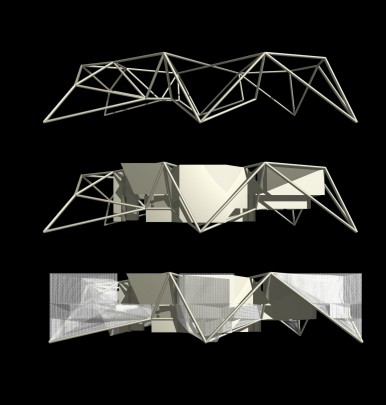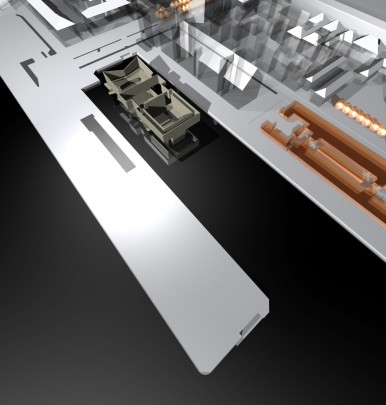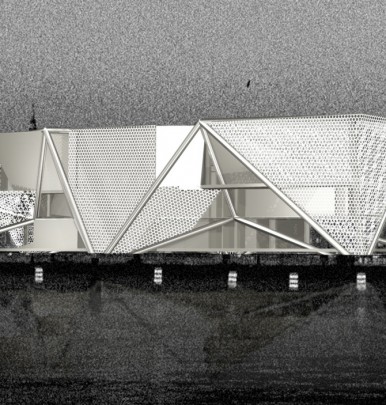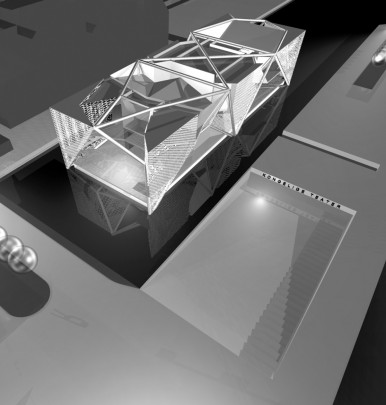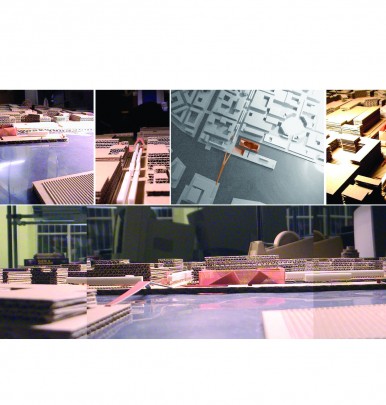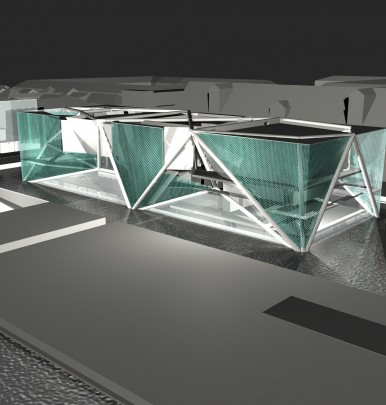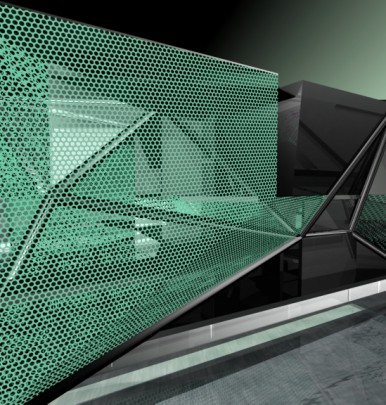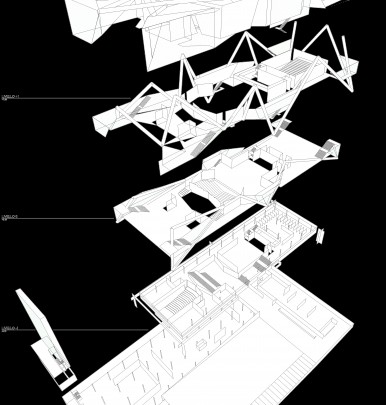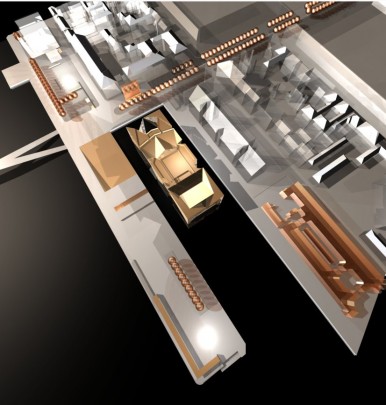ROYAL NATIONAL TEATHRE
Denmark LocationCopenhagen
TeamEnrico Mari Grego, Victor Vasilev, Mattia Susani
Chronology2004-2005
Project DescriptionPlot size – 20.084 sqm
Built up area – 31.000 sqm
Our proposal for the New Royal Theatre is the result of a close analysis of the site and program. At the outset of the project, a clear objective was set to create a building which interacts dynamically with its surroundings and offers optimum conditions for artistic expression. The site represents a particular situation along the waterfront of the harbour. Its contour, which is characterised by the presence of the quay, is unique. Our intention is to preserve its present form and to connect the quay with the city by creating a promenade, which will unite the whole waterfront. The proposal intends to extend the public area of the city, thus forming a continuum of the existing pedestrian zones. The flow of people will transform the area of the waterfront not just during big events, but also throughout the day. The New Royal Theatre will be situated in the middle of the quay. The resulting relocation of the ferry will change the urban scene, while maintaining the morphology of the site. Kvaesthusbroen will become a central element in the overall public space of Copenhagen, relating the harbour directly to the city centre. The program for the New Playhouse states clearly the necessity for a space which will provide optimum conditions for the performance not only of drama . A modern theatre is characterised by specific functional requirements, which are essential for its purpose. The spaces must offer maximum flexibility. Our idea is to create a common functional body, which stands between the two main auditoria, and is extended underground, becoming the base that supports all events. These spaces are illuminated with natural light from the top and present an open (free) plan in order to guarantee maximum flexibility. All levels are vertically interlocked in a way which allows for the movement of staff and equipment. By submerging the major part of the technical facilities, we are able to preserve the waterfront as a continuous public space, which will be integrated in the overall urban structure. The only part that remains visible and opened to the city are the two main auditoria surrounded by the foyer. The Royal Theatre is accessible through a short underwater passage which emphasises the entrance in a completely different environment. The foyer is opened on all sides, facing directly the city, separated only by a transparent curtain wall, covered with perforated copper sheets. A second entrance is situated on Sankt Annae Plads, which without obscuring the view of the harbour will become the meeting point between the city and the new theatre. It will also provide access for cargo and personnel. The main auditorium is organised on three separate levels which surround the main stage in order to bring the audience as close to the actors as possible. The second auditorium is completely suspended above the foyer, and offers the possibility to move the rows inside transforming the space of both foyer and auditorium. The definition of the project evolved as a result of a process which began with the delimitation of a single volume, whose dimensions are directly related to the surrounding buildings. Inside this volume we sought to create a clear distinction between the spatial requirements of the different functions. In the next phase we united the two elements by creating a single meshing element – a surface which provides continuity between interior and exterior space. It became the very factor in the evolution of the project.
